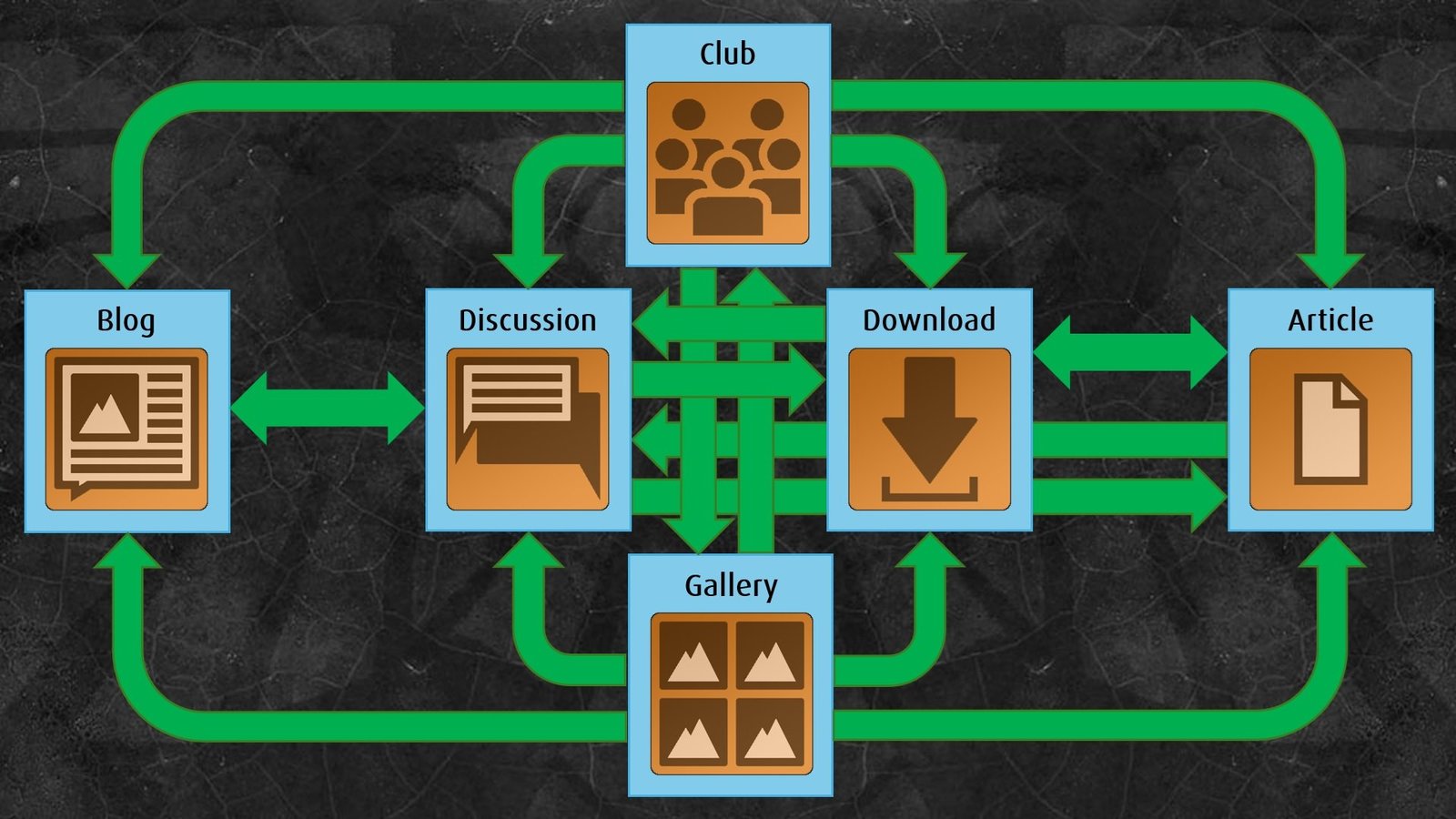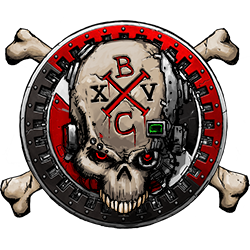Understanding [Most of] the B&C Site Features
This blog post started life as an effort to better educate members on the benefits of Pages/Articles after some posts, especially the one by @INKS here. The information herein goes beyond Pages/Articles, however, so I decided to locate it within my blog and then link to it in the aforementioned discussion, and maybe also in the Amicus Aedes forum. Realistically, this is just a precursor to something that should be either an article or a series of articles. It is being presented in this abbreviated format, however, in the interest of time (i.e., getting the information out there now) as we lean into making the Pages/Articles feature public.
A key issue is understanding the various features that the site offers. These include:
- Blog
- Club
- Discussion
- Download
- Event (i.e., Calendar) - I'm not going to discuss this feature much herein)
- Gallery
- Pages (hereafter referred to as Article)
The features that are well understood are discussion, download, and gallery. These features are mutually supporting and distinct from each other.
Conversely, the features that are not well understood (and woefully underutilized) are blog, club, and articles. As you will see below, there is a lot of overlap, but each serves a distinct purpose.
The core feature of the site, and that for which the site was created, was discussion. As the name implies, discussion is about various members providing their viewpoints/responses to various topics, engaging in a discussion with each other. The methods for formatting discussion posts transfer over to the other features. Discussion also supports the other features via the ability to post comments, notably in the blogs, galleries, and downloads. When members submit new downloads or articles, discussions are created to announce those additions and provide visibility for other members.
Since the other features came later, discussion has been used to emulate/bastardize those other features. For example, members often use discussions to present their blogs instead of using the actual blog function. Similarly, many articles are presented as discussions rather than via the actual article function. These emulations/bastardizations are functional and familiar, but they are sub-optimal, underutilizing the site's capabilities (for reasons that will be demonstrated later). That said, these emulations/bastardizations are effective (so we're not going to stop anyone from using them), though they are less effective than the actual features.
One aspect of discussions that many members don't notice is the archiving process. In the process, the site software automatically archives a discussion topic after a period of time. Once this happens, members can neither edit posts nor submit additional replies to that topic, effectively locking them.
The use of the gallery feature allows members to host images online so that those images can be used in the other site features, such as displaying an image of a painted miniature or a header image for a club/blog. Members have other options for hosting images online, but the B&C galleries are convenient and free. Since the hobby is so visually intense, the ability to display images is essential to effective discussion.
If you look at the top of the page, you'll see the site's mission statement. A key element of that is the final sentence - the sharing of hobby-related content [to help others enjoy the hobby]. While images (see gallery above) are an obvious element of that, there are many non-image forms of content that members can share with each other to fulfill this portion of our mission statement. Over the years we have seen myriad types of files shared via the downloads, including roster templates, homegrown rules, decals, missions, etc. In many cases, these content types can be shared via discussion, but the ability to download files provides much better control and enables more efficient printing of these files. An announcement is created in the discussion forums any time a file is submitted to our downloads, and members are able to comment in that discussion or directly to the file page to provide feedback to the content creator/submitter.
A blog bears a very strong resemblance to a discussion forum, but where the structure and scope of the discussion forums are controlled by the B&C admins, each member has control over their own blog. The real value of a blog is that a member can have a central location for all of their various projects. Discussions might fall off the front page, so if a member decides to update a project, they may have to perform some level of searching to find an existing project discussion (and there are various ways of performing such a search). If a member has a blog, however, they simply have to open their blog to narrow their search down, making it much easier to find the project they're looking for (and for others to review all of a member's projects without laborious searching).
One of the great things about the blog feature is that it provides members with a convenient and free way to present their own blog, saving them from having to host/download some other blog software and learn how to use that software.
The club feature is easily the best of the new features (since the site update a few years ago). Clubs fulfill a variety of purposes, limited only by the community requirement that a club be relevant to the Warhammer 40,000 hobby and members' imaginations (with the caveat that we won't approve of clubs that effectively duplicate public discussion forums - for example, we don't need a club for fans of the Dark Angels since we already have a discussion forum for that purpose). Clubs may be created to focus on products (e.g. 40K Action Figure Afficianados for fans of the JoyToy and McFarlane WH40K action figures), allow for coordination within specific geographic areas (e.g., the Europe club for those WH40K issues that are specific to the members of our community that reside upon that continent), allow for coordination within WH40K game clubs or stores (e.g., Metal Head Armory in Phoenix, Arizona, USA), development of homegrown rules (e.g., The Chronicles of Saint Katherine's Aegis), etc.
One particularly great capability that clubs provide is the ability for members to work on group projects without the need for B&C administrator support. In the past, we had the Special Projects forum in which members could create discussions to coordinate efforts in a special project (typically working towards the creation of some set of homegrown rules). Particularly complex projects often required the creation of dedicated sub-forums, allowing participants to have multiple discussions for better organization and partitioning of their project; and the creation of such sub-forums required administrator approval and a degree of work on the part of the approving administrator. With clubs, however, members can simply create a club dedicated toward their project. The really great part, though, is that the club owner/creator can include various features in the club, including one or more discussion forums, files (i.e., downloads), galleries, and events. This enables participants to upload project-specific files and images within the club, and to coordinate efforts on their own calendar. The club owner/creator can decide upon the features that will be available in the club, and these features can be updated later. The only hurdle with the clubs is that clubs must be approved by administrators, but with no other effort on their part, speeding things up considerably. In addition, club owners/creators can be given permissions similar to those of moderators within their clubs, allowing them to control content more easily without the need for administrator/moderator intervention (though they won't have disciplinary permissions). Overall, clubs provide members with a great deal of freedom, better supporting member-created content with much less need for moderators/administrators.
The (soon-to-be) newest feature is the pages (article) feature, which resurrects the functionality that we used to have in the Librarium (way back in the day). The key distinction between articles and discussions is that articles are a way for an author (or authors) to present their content to others, much the way articles are published in magazines and journals, whereas a discussion is much more open and anyone can participate. If a member has conducted a lot of research on a subject and wants to present their conclusions to other members, an article is an excellent format. If a member wants to debate issues or if they have questions for which they desire answers/feedback, however, a discussion would be a better format. As with downloads, the submission of an article creates a discussion that serves as both an announcement (providing visibility to other members) as well as a medium for others to provide their feedback on the article (and which the article author may consider for possible updates to the article).
Articles can have different origins. For example, a discussion topic may prompt a member to compose an article, whether some discussion of lore, the presentation of their homegrown Chapter of Space Marines, etc. Alternately, a member may complete a project that they presented in their blog, then they might collect the blog (or highlights thereof) into an article. Or a group may develop some project, presenting the finished product as an article.
It is also very important to identify the relationship between downloads and articles. Each of these features enables members to present the same (or similar) information via different mediums. The articles [pages] function allows for online/digital presentation of content (that is formatted based on the user's device), whereas downloads allow for that same information to be presented in a format that can be printed (in a format defined by the author). Many of you may be familiar with a variety of online libraries such as those that are available at learning institutions; those online libraries allow members to view an article online and often to download that article (typically in .pdf format). Our software doesn't allow for online presentation of a .pdf, unfortunately, but the online format (via the articles feature) provides better accessibility that is tailored to the user's device. There is no automatic linkage between the two features, unfortunately, nor is there (and there will not be) any mandated requirement from the site for members to submit content in both formats. In my ideal world, however, members will take the time to develop content in both formats to better support the various needs of other community members. At this point, all we can do is provide incentives to those outcomes via achievements/badges (i.e., the system tracks your content submissions and awards badges at different thresholds).
The most important thing to realize is that all of these features exist within an ecosystem. Each has a specific function and works best for different types of outcomes, though there are many commonalities. Yes, the discussion feature can be used to emulate blogs and articles, but blogs and articles each do their own thing better than discussions. Many of these features support or are supported by various other features.





0 Comments
Recommended Comments
There are no comments to display.
Create an account or sign in to comment
You need to be a member in order to leave a comment
Create an account
Sign up for a new account in our community. It's easy!
Register a new accountSign in
Already have an account? Sign in here.
Sign In Now